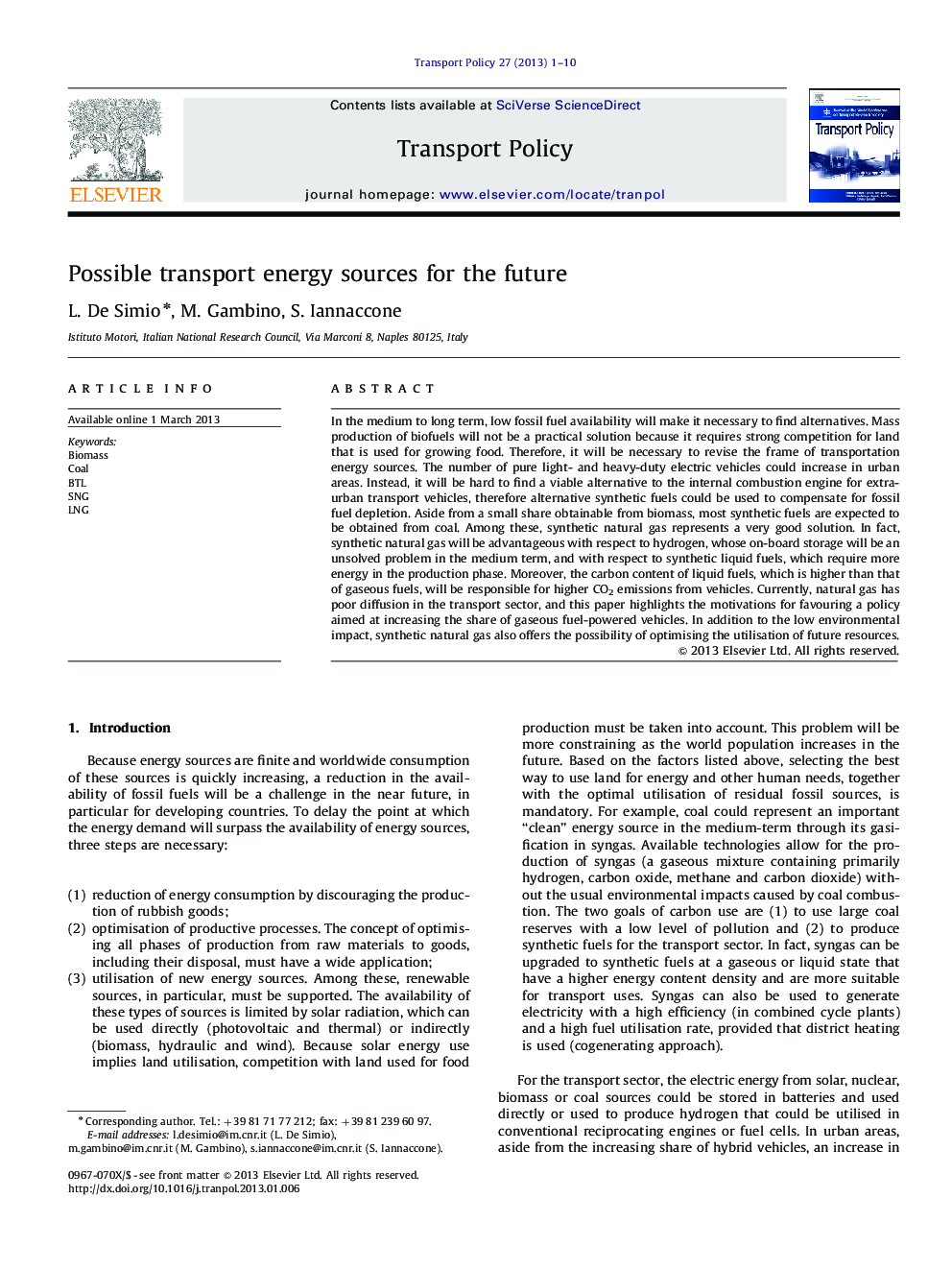| کد مقاله | کد نشریه | سال انتشار | مقاله انگلیسی | نسخه تمام متن |
|---|---|---|---|---|
| 1065049 | 1485850 | 2013 | 10 صفحه PDF | دانلود رایگان |

In the medium to long term, low fossil fuel availability will make it necessary to find alternatives. Mass production of biofuels will not be a practical solution because it requires strong competition for land that is used for growing food. Therefore, it will be necessary to revise the frame of transportation energy sources. The number of pure light- and heavy-duty electric vehicles could increase in urban areas. Instead, it will be hard to find a viable alternative to the internal combustion engine for extra-urban transport vehicles, therefore alternative synthetic fuels could be used to compensate for fossil fuel depletion. Aside from a small share obtainable from biomass, most synthetic fuels are expected to be obtained from coal. Among these, synthetic natural gas represents a very good solution. In fact, synthetic natural gas will be advantageous with respect to hydrogen, whose on-board storage will be an unsolved problem in the medium term, and with respect to synthetic liquid fuels, which require more energy in the production phase. Moreover, the carbon content of liquid fuels, which is higher than that of gaseous fuels, will be responsible for higher CO2 emissions from vehicles. Currently, natural gas has poor diffusion in the transport sector, and this paper highlights the motivations for favouring a policy aimed at increasing the share of gaseous fuel-powered vehicles. In addition to the low environmental impact, synthetic natural gas also offers the possibility of optimising the utilisation of future resources.
► While fossil fuel availability will decrease in the next future, generating the necessity of alternative fuels, global warming will need a reduction of greenhouse gas emissions in atmosphere.
► Pure electric and hybrid technology will be suitable only for urban application, but for extra urban mobility the necessity to have liquid or gaseous fuels for conventional or dedicated internal combustion engines will persist.
► Synthetic natural gas could be produced from biomass or coal with the lowest CO2 emissions and the highest fuel yield, at parity of coal or biomass consumed, respect to liquid synthetic fuels.
► The disadvantage of a low autonomy range could reduce the diffusion of gaseous powered vehicles for extra urban transports.
► Cryogenic technology together with dual fuel engine could permit to realize gaseous engine with efficiency and autonomy range similar to the actual Diesel engine, but with emissions, regulated and not regulated, comparable with actual spark ignition natural gas engine.
Journal: Transport Policy - Volume 27, May 2013, Pages 1–10